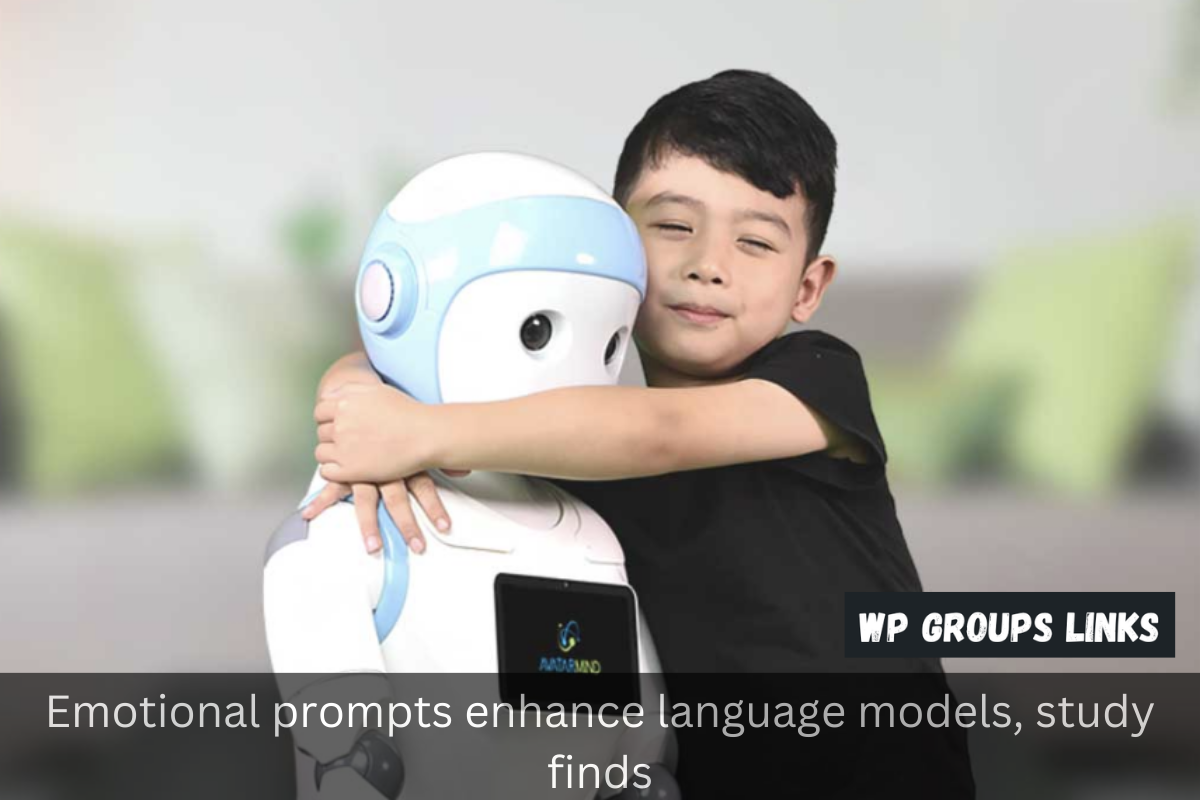Emotional Prompts Enhance Language Models, Study Finds
In the era of Artificial Intelligence (AI) and Natural Language Processing (NLP), the field has witnessed remarkable advancements in text generation. One of the fascinating revelations is the impact of emotional prompts on language models. This article delves into a comprehensive study that explores how emotional prompts can enhance the performance and creativity of AI language models.
The Role of Emotion in AI Text Generation
What Are Emotional Prompts?
Emotional prompts are specific cues designed to evoke emotions, such as joy, sadness, anger, or excitement, in language models during text generation. These prompts act as stimuli that guide AI models to produce text with an emotional tone or context.
The Growing Relevance of Emotional AI
In recent years, emotional AI has gained significant traction due to its potential applications in various domains, including customer service, content creation, and mental health support.
The Study: Unraveling the Power of Emotional Prompts
The Research Methodology
The study involved the analysis of a diverse dataset that included emotionally charged prompts. AI models were tested to observe their responses and creativity when subjected to emotional input.
Enhanced Expressiveness
The findings revealed that language models using emotional prompts produced text with enhanced expressiveness, capturing the intended emotional tone more effectively.
Improved Engagement
Text generated with emotional prompts showed higher engagement levels, making it more relatable and appealing to readers.
Creativity Unleashed
AI models demonstrated a significant boost in creativity when generating text with emotional prompts. The content exhibited a broader range of expressions and metaphors.
Practical Applications
Content Creation
Emotional prompts can revolutionize content creation by allowing writers and marketers to harness AI to produce compelling and emotionally engaging articles, advertisements, and social media posts.
Mental Health Support
In the field of mental health, AI-driven chatbots and virtual therapists can use emotional prompts to provide more empathetic and supportive interactions with individuals seeking assistance.
Customer Engagement
Emotional AI can enhance customer engagement in various industries by personalizing interactions and understanding customer sentiments, leading to improved customer satisfaction.
Challenges and Considerations
Emotional prompts in AI text generation offer exciting possibilities, but they also come with their own set of challenges and considerations. Here, we explore some of the key issues that need to be addressed when using emotional prompts in the context of AI-driven content generation.
Ethical Concerns Emotions are a powerful force, and the use of emotional prompts raises ethical questions. One major concern is the potential for emotional manipulation. When AI models are guided by emotional prompts, there’s a risk of intentionally or unintentionally manipulating the emotions of the audience. This could be exploited for various purposes, including marketing and propaganda. Striking a balance between using emotions for positive engagement and avoiding manipulation is a challenge.
Unintended Biases Another ethical concern is the potential for generating content with unintended biases. AI models learn from the data they are trained on, and if that data contains biases, these biases may be perpetuated in the generated content. This could result in content that is unintentionally offensive, discriminatory, or insensitive. Careful monitoring and mitigation of biases are essential to ensure that AI-generated content remains fair and unbiased.
Data Privacy As AI systems become more emotionally intelligent, there’s an increasing need to collect and analyze emotional data from users. This can raise significant data privacy concerns. Emotional prompts may require access to personal emotional data, which must be handled with the utmost care and in compliance with data privacy regulations. Ensuring that users’ emotional information is protected and used ethically is crucial.
Algorithm Transparency Understanding how AI models respond to emotional prompts is essential for transparency. Users and developers need to know how these systems work to trust their outputs. The opacity of AI algorithms can be a significant barrier. Efforts should be made to improve the transparency of AI models and provide insight into how they generate emotionally infused content.
User Consent Using emotional prompts to personalize content and interactions raises questions about user consent. It’s important to ensure that users are aware of and comfortable with the use of their emotional data. Obtaining clear and informed consent should be a priority to respect users’ autonomy and privacy.
Emotion Recognition Accuracy Emotional prompts rely on emotion recognition technology, which is not always perfect. Ensuring the accuracy of emotion recognition systems is a challenge. Inaccurate readings of emotions can lead to misaligned or inappropriate AI responses, potentially harming user experiences.
Diverse Emotional Expressions Emotions are complex, and different people express them in diverse ways. AI models may struggle to accurately interpret and respond to these individual variations. Achieving a level of emotional intelligence that can cater to a wide range of emotional expressions is a significant challenge.
While emotional prompts offer promising opportunities for improving AI-driven content generation and user experiences, they come with a set of complex challenges and ethical considerations. Striking the right balance between using emotions to enhance content while respecting ethical boundaries and privacy is crucial as we navigate the evolving landscape of AI and emotion. Addressing these challenges will be vital in ensuring that the benefits of emotional prompts can be harnessed responsibly and ethically.



